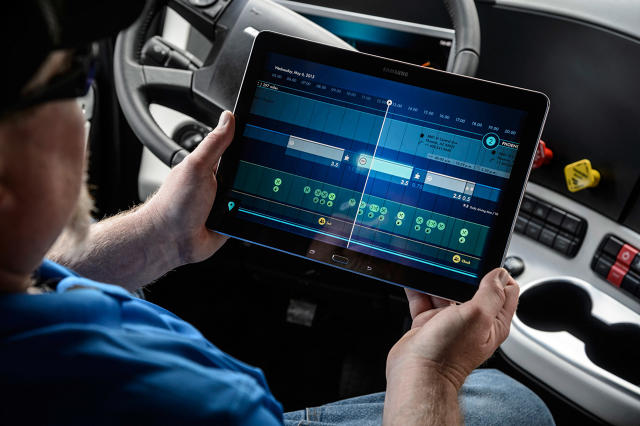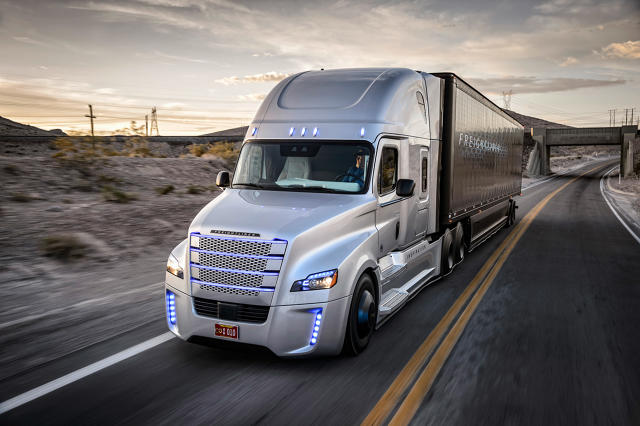In a single day, semi trucks on U.S. roads pump out over half a million metric tons of carbon pollution. The EPA hopes to change that with new requirements for better fuel economy (a typical heavy-duty truck only drives five to six miles per gallon of diesel fuel). In the future, self-driving technology could also help cut down on fuel footprints.
In May, Daimler started testing the first autonomous truck in the U.S. on Nevada roads, after introducing a similar version in Germany last year. Because the truck can accelerate and brake by itself, it does a better job of not wasting fuel.

“Driver variability plays a part in overall fuel economy,” says Derek Rotz, manager of advanced engineering at Daimler Trucks North America. “A driver who adopts an efficient driving style will save more fuel than a driver whose driving style is inefficient.” The new self-driving truck, which drives steadily in a single lane instead of impatiently trying to get ahead, is estimated to be able to help cut fuel consumption by 5%.
The truck is also designed to make things a little less tedious for drivers stuck for hours on the road. While drivers can’t sit back and do nothing—the truck can’t get on or off the highway by itself, change lanes, or handle tricky weather conditions like snow—they can use the truck’s new controls on long, boring stretches of road.

When the truck detects that it’s safe to drive itself, it shows an alert, and the driver can hit a button and take their hands off the wheel and feet off the pedals. Using the lane markings for guidance, the truck steers through curves and automatically adjusts to traffic, slowing down if a car pulls in front.
“It takes some of the cognitive workload off the driver,” Rotz says. “Just not having to focus as intently on the road.” In tests, Daimler monitored brain waves as drivers tried out the new trucks, and found that they were more tired when they had to drive all the time themselves. With the autonomous feature turned on, they became more alert.
The technology takes time to adjust to. “From the start, and actually until you get familiar with it you feel pretty cautious, you monitor the what’s going on closely, you may have a desire to grab the steering wheel,” says Rotz. “But once you start watching the vehicle and it stays in its lane, and you start maneuvering through some curves, you become comfortable with it because you understand how it works. And you just let it take control.”

Though the design is being tested now on highways, it’s still in development. “What we’re talking about right now is still several years out,” Rotz says. Even after the technology is fully ready for use—and after the manufacturer has brought down the cost enough for truckers to start buying—the trucks won’t actually see use unless regulations change. Daimler is hoping for national laws, rather than state-by-state approval.
In the meantime, trucks may be able to drastically cut emissions just by adopting technology that will be available sooner; by 2017, trucks could potentially cut fuel use by 35%.